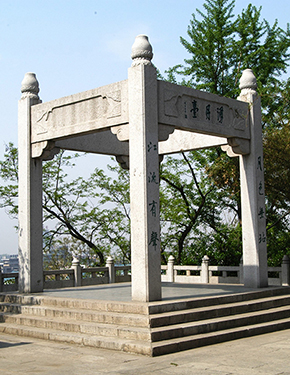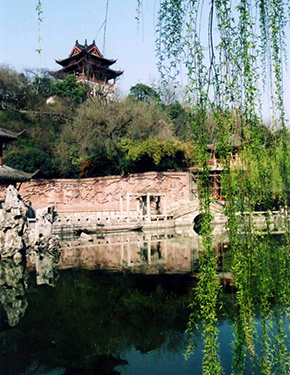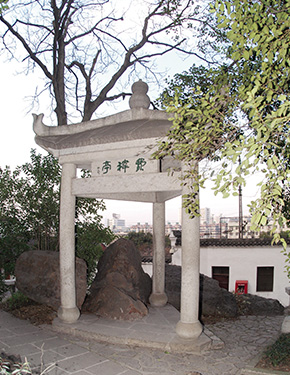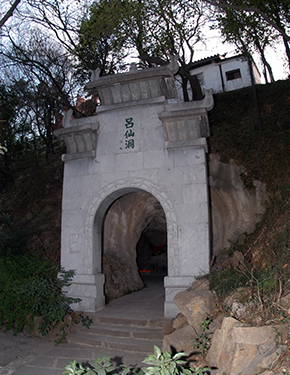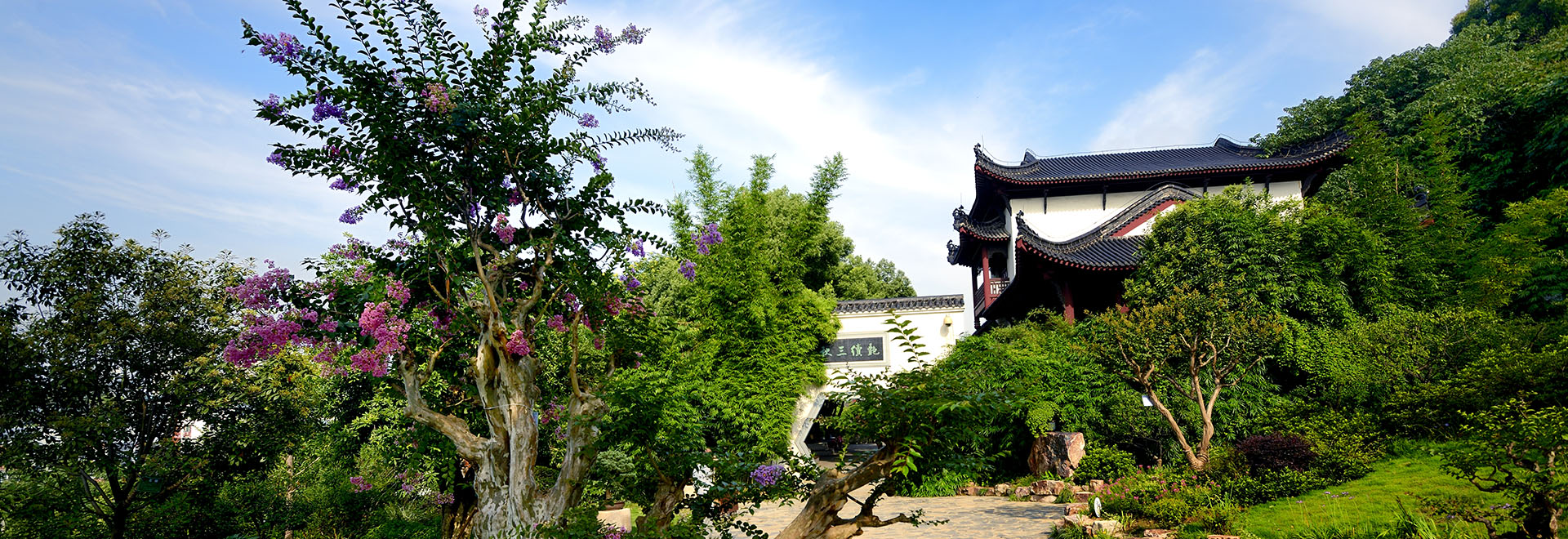
Knees-Holding Pavilion
- Nomal
- Enlarge
- Reduce

In the early Republic Period, this pavilion was erected to commemorate Liang Dingfen. Its original location was the top of Snake Mountain behind the Tower of Profound Wisdom. Later in the spring of 1994, it was rebuilt in the Northern Section of the park. This edifice has since perched 52 m northeast of Whit Cloud Pavilion and 326 m east of Yellow Crane Tower.
Through his life Liang loved reading and drinking. This scholar versed in literature and calligraphy often exchanged antiphons with literary lords like Zhang Zhidong, Chen Sanli and Kang Youwei. Liang, Zhang and Duan Fang formed “three major genres of calligraphy” followed by local artists. Liang lived in Hubei for 17 years, but left here few handwritings. Why? Because the scholar’s last words read, “I’ve led a lonely life and attained nothing academic. So, I don’t want my writings to be printed.” “This year I burnt down many writings. If such writings are not burnt, I will burn any writing as long as I see it. “Don’t let a word of mine be passed down to later generations. I feel so dismal and depressed as to allow no transmission of my writings.”
The early days of Republic Period bore witness to its erection, which aimed to memorize Liang Dingfen holding titles such as Superintendent of Lianghu Academy, Supervisor-in-General of Hubei Education Office and Hubei Commissioner. The pavilion gets its name from Zhuge Liang’s “Chanting the Song of Master Liang with held knees.” A Brief History of Cao-Wei Dynasty writes, Zhu Geliang “always behaved calmly day and night, and often held both knees for chanting loudly.” This allusion suggests Liang Dingfen won wide acclaim among the students for his contributions to Wuhan’s education. At the same time, it indicates he had a liking for writing and chanting his own poems. Upon its completion, the hexagonal pavilion with double eaves enjoyed a panorama of the entire Wuhan. It’s a pity that the pavilion was destructed to erect the Yangtze Bridge.
The rebuilt pavilion boasts pyramid roof, double eaves (roof and eaves stretched out like wings) and round tiles (ornaments on the ridge). This pavilion is 7.2 m high as supported by 6 stone columns. Each column features 3 m height and 2.06 m circumference. Exquisite balustrades on all 6 sides let the pavilion take on an elegant look. As a whole, the pavilion flanked by two inscriptions on alabaster is made of white marble from Tunxi, Anhui. The pavilion name is Mei Qian’s inscription.
Tourist Service
- consulting hotline
Service hotline: 027-88875096
Supervision hotline: 027-88848188
027-12301
(Wuhan Tourism Bureau.)
027-87124701
(Hubei Tourism Administration)
- Official qr code.

Scan focuses on the yellow crane tower.
- Online consultant
- Complaint and advice

